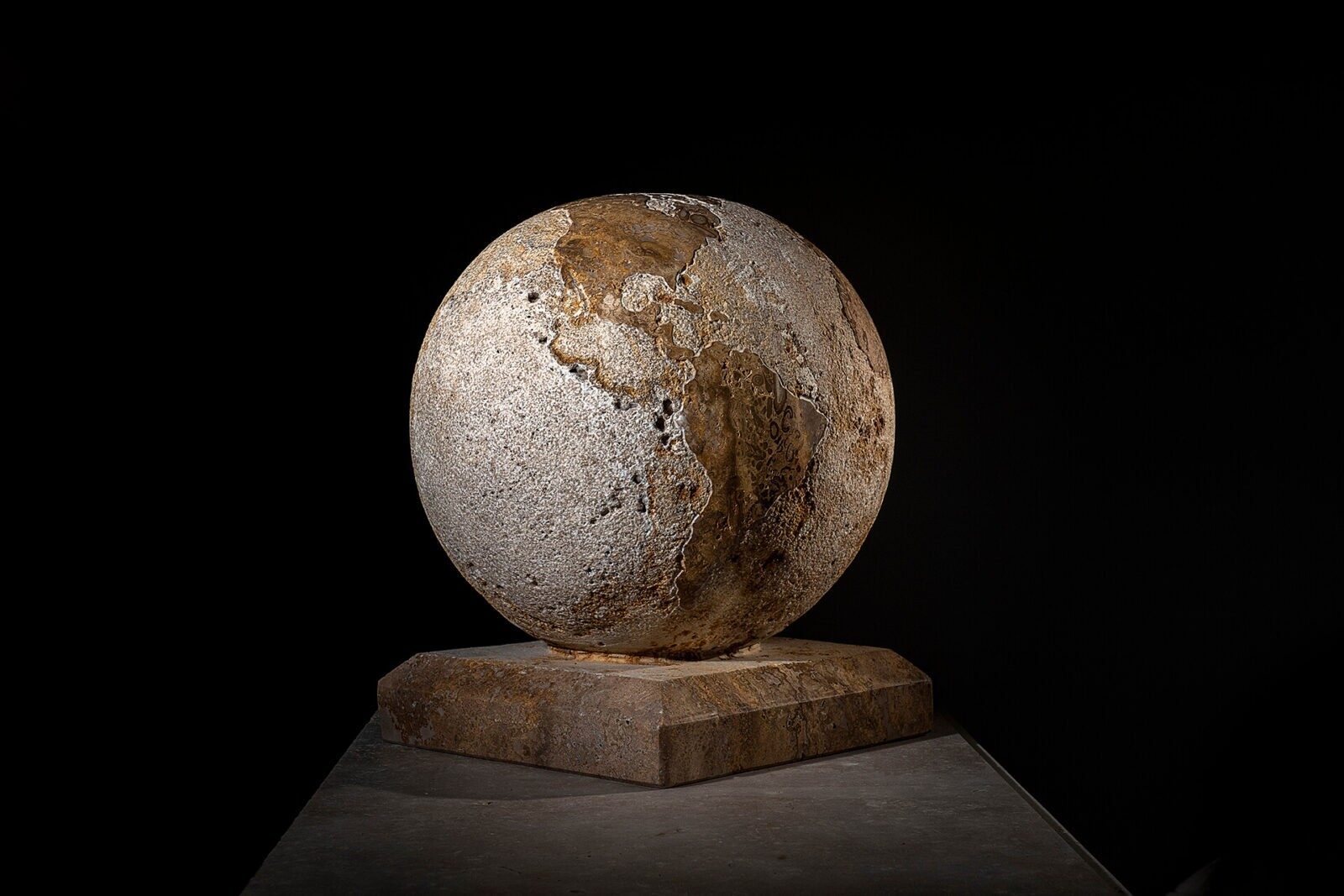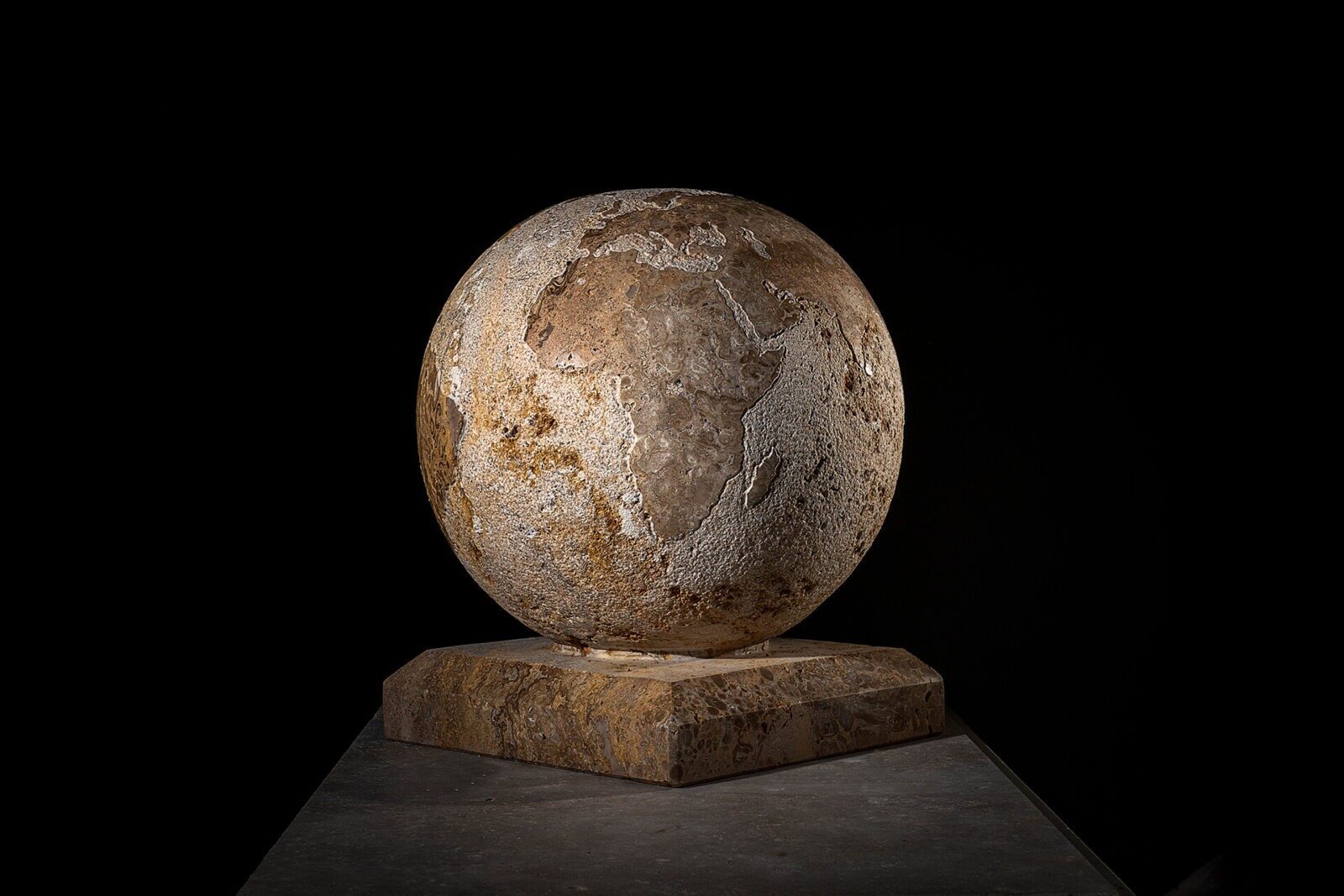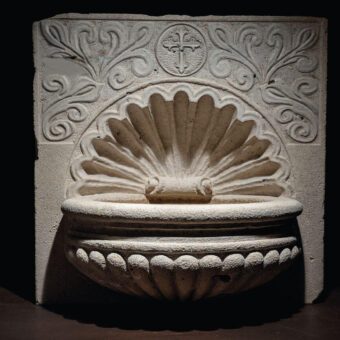GLOBUS
From time immemorial, the human being felt the necessity to bring about the creation of globes to understand the planet he lived in and the way it worked. Here, the three-dimensional representation of the Earth is done on a spherical Base of travertine marble and the texture represent the relief of the continents, oceans and geographical-territorial division of the countries with a simple but elegant hint.
| Weight | 55 kg |
|---|---|
| DIMENSIONS | 35 CM (H), 25 x 25 CM (BASE) |
| MATERIAL | TRAVERTINE CREAM |
| DELIVERY TIMES: | 35- 45 DAYS |
From time immemorial, the human being felt the necessity to bring about the creation of globes to understand the planet he lived in and the way it worked. Here, the three-dimensional representation of the Earth is done on a spherical Base of travertine marble and the texture represent the relief of the continents, oceans and geographical-territorial division of the countries with a simple but elegant hint.
The “globus terrae” used to be a recurrent motif employed to refer to our planet. In fact, Cicero would do it. It seems that the Hellenistic astronomy had no doubts about the Earth being spherical. Crates of Mallus in Sicily built it using such shape by mid second century B.C. The paradigm was increasingly adopted in the Ancient world during the late antiquity and the middle ages. The expeditions of Ferdinand Magellan and Juan Sebastian Elcano, succeeded in applying the concept of round world and circumnavigate it, renouncing previous general believes in a flat earth.
The first globes represented just the land according to knowledge that people had about each historical moment. The globes built by Muslim cartographers in the Islamic golden age achieved a great degree of perfection. Later on, they were built as uncommon objects assigned to aristocracy and clergy or reproduced in miniature as travelling object. Sometimes, they were accompanied by celestial globes and in the XVIII century, with planetarium and armillary spheres with didactic purposes simulating the movement of the planets around the sun.
The oldest globe still preserved is the so-called “erdapfel” of Martin Beheim, built between 1491 and 1493. It is exhibited in the National museum of Germany in Nuremberg, territory converted into the world fabrication center. Some of them had great fame , like the pair of two great globes of Luis XIV of France in 1683 (terrestrial and celestial) whose diameter is 4 centimeter long and ,made by the venetian cartographer Vincezo Coronelli, whose success was so spectacular that he received several added requested.
Getting back to reality, the origin of these tools for sailing and astronomy used later as educational tools, has a purely decorative aspect assigned to be prestigious objects and occupy a place of elegance and value.

















